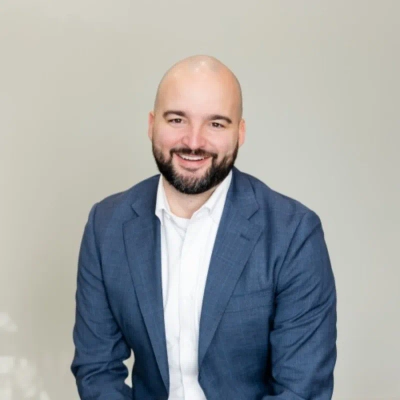How to Overcome Website Design Challenges: Insights from Experts
Website design can be a complex and challenging process, often filled with unexpected hurdles. This article delves into the most common obstacles faced by web designers and provides practical solutions to overcome them. Drawing from the insights of industry experts, readers will discover proven strategies to navigate the intricacies of website design and deliver outstanding results.
- Guide Clients Through Discovery Process
- Balance Creativity with Performance
- Refine Ideas for User-Friendly Functionality
- Use Research to Focus on User Needs
- Adapt to Changing Job Market Demands
- Transform Client Indecision into Clear Plans
- Unify Design Process with Integrated Tools
- Start with Product Positioning
- Test Designs Early for User Experience
- Prioritize Conversion Over Visual Appeal
Guide Clients Through Discovery Process
One of the biggest challenges I face as a website designer is aligning clients' grand visions with the realities of budget, timeline, and technical feasibility.
Clients often come in excited, expecting a high-end, custom site delivered fast and within a modest budget, but without fully understanding the trade-offs involved.
To avoid misalignment, I guide clients through a clear discovery process. We define their business goals, prioritize must-have features, and break the work into manageable phases. Tools like wireframes and scoped project plans help make things real early on, so expectations stay grounded.

Balance Creativity with Performance
One of the biggest challenges I face as a frontend developer working on website design is balancing creativity with performance. Sometimes a beautiful design looks great in concept but leads to slow load times or awkward behavior on smaller screens. The key is making sure visuals not only look good but also work well in real-world conditions.
To overcome this, I rely on tools like Figma for structured design handoff and Chrome DevTools for real-time performance testing and responsiveness checks. I also use Lighthouse to audit page performance and accessibility. These tools help me spot issues early and optimize without compromising the visual experience.
The strategy that works best is constant collaboration. I stay in sync with our designers to suggest practical tweaks that preserve the look while improving speed and functionality. Good design isn't just what you see — it's how smoothly it works across devices.

Refine Ideas for User-Friendly Functionality
One of the biggest challenges is balancing a client's vision with what actually works for their audience and the functionality of the site. Clients often come with big ideas (which I love!) but sometimes those ideas need refining to ensure the site is user-friendly, on-brand, and strategically designed to convert.
To overcome this, I guide clients through a clear, collaborative process. Starting with a strategy workshop to align on goals, audience needs, and design priorities, I keep communication and feedback streamlined with a simple client portal, and create mockups so they can visualize the design before it's built. By educating clients along the way and showing them how design decisions impact user experience, we create websites that are not only beautiful but also functional and results-driven.

Use Research to Focus on User Needs
One of the biggest challenges I have faced in web design is navigating the sea of opinions that come from every corner of the business. Everyone has something to say: marketing wants it to pop, legal wants it to shrink, and the CEO just had a great idea in the shower. The tricky part is keeping all those voices in the room without losing sight of the one that matters most: the user.
To deal with this, I lean heavily on research. Not because it makes me sound smart in meetings (although that is a bonus), but because real user insight is the best way to cut through the noise. I try to bring user evidence into conversations early, speak in outcomes not features, and make sure we are solving the right problems, not just the loudest ones.
I also use shared design principles to shift the conversation from personal preference to user value. It helps keep things grounded and gives everyone a shared compass. And when feedback rolls in, I keep it focused and friendly, while gently nudging things back toward what the data and the users are telling us.
At the end of the day, the goal is simple: build something that works for real people, not just for the org chart. That, and avoid the sixth round of "tiny tweaks" at midnight the night before go-live.

Adapt to Changing Job Market Demands
The biggest challenge I have faced in recent years, without a doubt, is the decrease in the number of design job openings.
There are many hypotheses about why this is the case, including oversaturation of the market, market correction in recent years, or large layoffs at tech companies. However, it's most likely something that is not going to change anytime soon, especially with AI on the horizon.
I think there are two ways to overcome this:
The first is to become one of the top 1% of designers, which logically not everyone can achieve. At this level of competition, sometimes it doesn't even matter how good you are, because you can get lost among hundreds of CVs.
The second way I see to address the shrinking market is to acquire more skills such as some front-end coding, working with AI, or marketing. The logic behind this is that in expanding fields, there is a demand for specialists. For example, UX researchers, UI designers, prototyping specialists... Anecdotally, I remember a time when UX/web design was on the rise, and there were plenty of designers who would complain about job listings asking for a designer who could also code a bit. Those times and comments are gone. Now, there are more and more job listings asking for coding skills along with full-stack UX design.
The good news is that thanks to recent tools such as Claude, AI, or for example, Cursor, it has never been easier to start learning how to code or to put some working code together.

Transform Client Indecision into Clear Plans
One of the biggest challenges I face is client indecision. It's surprising how many people want a website but aren't sure what they actually want it to do.
To solve this, I treat the early phase like a therapy session, with lots of listening, a few pointed questions, and a whiteboard full of chaos that eventually turns into a wireframe.
Tools like Figma help visualize ideas quickly, and Loom is great for asynchronous walkthroughs, eliminating those "Where's that button again?" emails.
Another hurdle? SEO being an afterthought. I nip that in the bud early. Every layout, heading, and internal link is planned with search visibility in mind.
My strategy? Speak human. Then design and optimize accordingly.
Most of the time, people don't want a "stunning" website; they want one that works, converts, and doesn't crash when they launch a Facebook ad. That's the real goal.

Unify Design Process with Integrated Tools
The biggest challenge in website design is not creativity. It is operational fragmentation. In many organizations, design, development, quality control, and project management happen in separate tools with different workflows. This disconnect slows down delivery, creates communication gaps, and increases the risk of inconsistency and errors. For my team, the breakthrough came when we made the decision to consolidate our entire operation into a unified system.
We now use Figma for design and collaboration, ChatGPT for structured testing and content support, automation tools to streamline asset delivery and testing, formalized quality control steps, and Jira to manage the full project lifecycle. Bringing these tools into a single ecosystem transformed our process.
The impact has been clear. We deliver faster, with fewer bugs and stronger alignment between teams. Automation helps reduce manual effort and surface issues early. Designers, developers, and product managers are now working in sync, not in silos. As a result, we have improved quality, reduced costs, and created a more collaborative and efficient environment. This system has made it easier to build high-quality front-end experiences at scale, without sacrificing creativity or speed.

Start with Product Positioning
Starting From Scratch Without Clear Direction
The hardest challenge is staring at a blank canvas with vague requirements like "make it modern" or "users should love it." Without clear direction, you end up designing in circles.
My Solution - Product Positioning First:
Before touching design tools, I spend time understanding the product's core positioning. Who is this for? What's their main pain point? What action do we want them to take? This creates design constraints that actually help creativity.
First Principles Approach:
Instead of copying trendy designs, I break down the user's journey into fundamental steps. What's the absolute minimum they need to accomplish their goal? This prevents feature bloat and creates cleaner interfaces.
Component-Based Execution:
Once I have clarity on goals, I leverage design systems and component libraries (like Tailwind UI, Chakra, or custom component sets). I start with proven patterns, then customize colors, spacing, and interactions to match the brand.
Real Example: For DocJacket, instead of designing a generic "document platform," I focused on the specific pain of contract review delays. This led to a dashboard that prioritizes urgent contracts first - a design decision that came from understanding the positioning, not visual preferences.
Bottom Line: Clarity of purpose always beats creative flair. Get the positioning right, and the design decisions become obvious.

Test Designs Early for User Experience
I'd say balancing creativity with clarity is crucial. Between writing content and designing a website, it's tempting to push boundaries with complex layouts, but at the end of the day, users just want a site that feels effortless to navigate.
My go-to strategy is to step away from my own assumptions and test my designs early—even with simple prototypes. I rely on tools like Figma for rapid mockups and Maze for unmoderated user testing, so I'm not guessing how real people will interact with my work.
One unique practice I use is called 'semantic chunking.' In place of just grouping content visually, I organize information based on meaning and mental models users already have. It helps reduce cognitive load and makes even complex sites feel intuitive.

Prioritize Conversion Over Visual Appeal
Hi,
The biggest challenge in website design? Convincing clients that "pretty" doesn't pay. At Ignite Digital, we've seen time and again that flashy designs often kill conversion. We design backwards, from conversion goal to layout.
For Volpe Financial Solutions, we scrapped their old site and built one driven by appointment funnels. Bounce rate dropped by 33%, and form submissions jumped 223% in three months. It's not revolutionary; rather, it's just ruthless focus on what users actually want to do.
We use real-time heat mapping tools like Hotjar, pair them with keyword and UX audits, and never hit "launch" until the funnel flows. The hard part is resisting the ego-driven urge to "wow" instead of sell.
Cheers,
Matthew Goulart
Founder, Ignite Digital
https://ignitedigital.com


